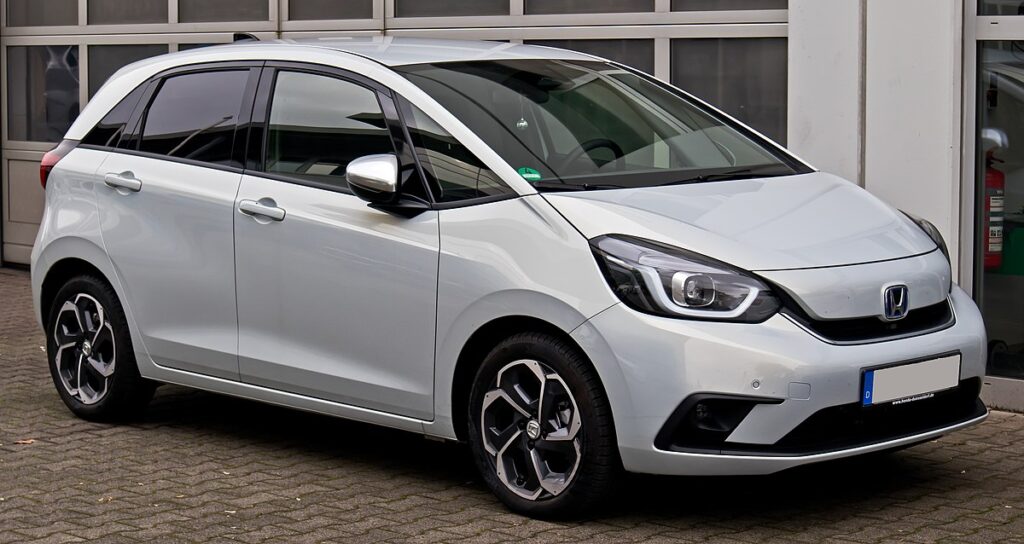
Honda Jazz Dimensions: Complete Size, Space, and Practicality Guide

When it comes to small cars that punch far above their weight, few models do it quite like the Honda Jazz. Behind its modest footprint lies one of the most ingenious uses of space in the subcompact segment. Let’s explore the Honda Jazz’s dimensions, weight, boot space, and interior layout in detail — with data-backed precision and practical insights for real-world use.
- Overview: Compact Yet Exceptionally Roomy
- Exterior Dimensions of the Honda Jazz
- Wheelbase and Stability
- Ground Clearance: 136 mm of Confidence
- Curb Weight: 1,230 kg of Lightweight Efficiency
- Interior Space: Magic Seats and Roomy Cabin
- Boot Space: Class-Leading Practicality
- Comparative Dimensions: Honda Jazz vs Competitors
- Passenger Comfort and Practicality
- Storage Compartments and Everyday Usability
- Practical Dimensions for Real Life
- Aerodynamic Shape and Efficiency
- Versatility Beyond Dimensions
- Dimension Impact on Driving Dynamics
- Weight Distribution and Ride Feel
- Conclusion: Smart Design, Maximum Utility
- FAQs About Honda Jazz Dimensions
Overview: Compact Yet Exceptionally Roomy
Despite its small exterior size, the Honda Jazz (also known as the Honda Fit in some markets) is a masterclass in packaging. It was designed to offer maximum cabin space within minimal overall dimensions, making it ideal for city driving while still accommodating family and cargo needs.
| Specification | Measurement |
|---|---|
| Length | 4,089 mm (4.09 m) |
| Width | 1,694 mm (1.69 m) |
| Height | 1,526 mm (1.53 m) |
| Wheelbase | 2,517 mm (2.52 m) |
| Ground Clearance | 136 mm (13.6 cm) |
| Curb Weight | 1,230 kg |
| Boot Capacity (Seats Up) | 304 litres |
| Boot Capacity (Seats Down) | 1,205 litres |
Exterior Dimensions of the Honda Jazz
Length: 4.09 Metres of Urban Agility
At 4,089 mm long, the Honda Jazz slots comfortably in the subcompact category — slightly shorter than a Renault Clio or Ford Fiesta. This makes it nimble in tight city streets, effortless to park, and easy to manoeuvre in traffic.
- Perfect for urban use: The Jazz’s short overhangs and tall profile make parking in tight spots a breeze.
- Smart proportions: The squared-off rear end allows better cargo use compared to many hatchbacks.
With a width of 1,694 mm, the Jazz offers an ideal balance between cabin comfort and city practicality.
- Tight lane fit: Fits easily into narrow city streets and compact car parking spaces.
- Comfortable cabin: Despite its small width, Honda’s clever interior layout ensures enough shoulder room for four adults.
Height: 1.53 Metres of Vertical Advantage
The height of 1,526 mm gives the Honda Jazz one of the tallest stances in its class, creating a sense of openness inside.
- Excellent headroom: Even tall passengers will appreciate the generous roofline.
- Easy ingress and egress: The raised seating makes it effortless to get in and out, perfect for everyday usability.
Wheelbase and Stability
The Jazz’s wheelbase measures 2,517 mm, which plays a key role in:
- Cabin space: More distance between the axles translates to excellent legroom.
- Ride comfort: Helps the suspension smooth out road imperfections.
- Stability: Provides a planted feel even at motorway speeds.
In short, it’s long enough to offer interior comfort but compact enough to stay agile.
Ground Clearance: 136 mm of Confidence
A ground clearance of 136 mm strikes a practical balance:
- City-friendly: Low enough for stable handling and good aerodynamics.
- Rural-capable: High enough to clear speed bumps and uneven roads without scraping.
This makes the Jazz an excellent all-rounder for both city and countryside driving.
You may be interested in reading Hyundai i10 1.0 Boot Space, Dimensions, and Luggage Capacity Guide (2025 Update)
Hyundai i10 1.0 Boot Space, Dimensions, and Luggage Capacity Guide (2025 Update)Curb Weight: 1,230 kg of Lightweight Efficiency
At just 1,230 kilograms, the Honda Jazz remains light for a hybrid hatchback, contributing to:
- Fuel efficiency: Less weight means better mileage.
- Responsive handling: Agile and predictable around corners.
- Braking efficiency: Shorter stopping distances compared to heavier rivals.
The balance between lightness and rigidity also contributes to the Jazz’s impressive safety record.
Interior Space: Magic Seats and Roomy Cabin
Honda’s “Magic Seat” system remains the star feature of the Jazz. By placing the fuel tank under the front seats, Honda freed up enormous rear cabin and boot space.
Front Row
- Wide windscreen for panoramic visibility.
- Comfortable, upright seating with excellent ergonomics.
- Generous leg and shoulder room for the driver and passenger.
Rear Row
- The Magic Seats fold in multiple configurations:
- Utility mode: Rear seats fold flat to expand boot space to 1,205 litres.
- Tall mode: Seat bases fold upward to transport tall objects.
- Long mode: Front passenger seat folds flat for lengthy items.
- Rear legroom rivals that of larger C-segment cars.
Boot Space: Class-Leading Practicality
| Configuration | Boot Capacity |
|---|---|
| Seats Up | 304 litres |
| Seats Down | 1,205 litres |
Even with all seats in use, the Jazz’s 304-litre boot is sufficient for weekly groceries or a medium suitcase set. Fold the rear seats down, and the cargo capacity rivals that of some compact SUVs.
Comparative Dimensions: Honda Jazz vs Competitors
| Model | Length (mm) | Width (mm) | Height (mm) | Boot (L) |
|---|---|---|---|---|
| Honda Jazz | 4,089 | 1,694 | 1,526 | 304–1,205 |
| Toyota Yaris | 3,940 | 1,745 | 1,500 | 286 |
| Renault Clio | 4,050 | 1,798 | 1,440 | 391 |
| Hyundai i20 | 4,040 | 1,775 | 1,450 | 352 |
| Mazda2 | 4,070 | 1,695 | 1,495 | 280 |
While others might have slightly larger boots with seats up, the Jazz wins hands-down on configurability and usable cargo height.
Passenger Comfort and Practicality
Beyond numbers, the Honda Jazz delivers remarkable comfort for its size:
- Tall windows and slim pillars enhance visibility.
- Flat floor design in the rear allows better foot space.
- Ample headroom and light cabin feel create an airy atmosphere.
- Wide door openings make child seat installation easy.
Storage Compartments and Everyday Usability
Honda doesn’t just rely on clever seats — there are multiple storage areas throughout:
- Deep door bins for bottles and small bags.
- Twin cup holders near the driver and passenger.
- Central storage tray and large glovebox.
- Under-seat and under-boot compartments (on some trims).
Practical Dimensions for Real Life
- Ideal for city parking: Fits easily into small urban spaces.
- Excellent for families: Space flexibility rivals larger vehicles.
- Easy loading: Wide tailgate opening and low boot lip height.
- Pet and luggage friendly: Flat load floor and tall boot opening.
Aerodynamic Shape and Efficiency
Despite its tall build, the Honda Jazz maintains aerodynamic efficiency. Honda’s engineers optimized the front fascia, A-pillars, and roofline for reduced drag, enhancing:
- Fuel economy.
- High-speed stability.
- Reduced wind noise.
Versatility Beyond Dimensions
The Jazz isn’t just about size — it’s about how that size works. You can:
You may be interested in reading Hyundai i10 1.0 Boot Space, Dimensions, and Luggage Capacity Guide (2025 Update)
Hyundai i10 1.0 Boot Space, Dimensions, and Luggage Capacity Guide (2025 Update) Hyundai i10 Engine Oil Guide: Choosing the Right Oil for Every Model and Year
Hyundai i10 Engine Oil Guide: Choosing the Right Oil for Every Model and Year- Fold seats up to carry plants, bicycles, or tall items.
- Create a flat, van-like cargo area for weekend trips.
- Transport long objects by folding the front and rear seats together.
Few subcompacts offer this Swiss-army-knife versatility.
Dimension Impact on Driving Dynamics
- Short length & wheelbase: Great for agility and quick turns.
- Moderate width: Offers stability without making it cumbersome.
- Tall body: Elevated seating for SUV-like visibility.
Despite its small size, the Jazz feels confident even on motorways thanks to a well-tuned suspension and a solid chassis.
Weight Distribution and Ride Feel
The lightweight chassis contributes to a composed, balanced ride:
- Front-heavy bias (FWD): Provides predictable cornering.
- Hybrid models: Benefit from battery weight placement, improving balance.
- Low centre of gravity: Enhances cornering confidence.
Conclusion: Smart Design, Maximum Utility
The Honda Jazz dimensions prove that good design can make a small car feel big inside. With its 4.09 m length and 1.53 m height, it fits the city perfectly — yet delivers interior flexibility that rivals larger hatchbacks. From its 304-litre boot to the Magic Seat system, it stands as one of the most space-efficient vehicles in its class.
If practicality, comfort, and compactness are what you seek, the Honda Jazz remains the benchmark for clever small-car design.
FAQs About Honda Jazz Dimensions
1. How long is the Honda Jazz?
The Honda Jazz measures 4,089 mm (4.09 metres) in length.
2. What is the boot capacity of the Honda Jazz?
It offers 304 litres with the seats up and up to 1,205 litres when the rear seats are folded.
3. How much ground clearance does the Honda Jazz have?
The ground clearance stands at 136 mm, balancing city usability and comfort.
4. Is the Honda Jazz spacious inside?
Yes. Thanks to its Magic Seat system and tall cabin design, it’s one of the most spacious cars in its segment.
 Hyundai i10 1.0 Boot Space, Dimensions, and Luggage Capacity Guide (2025 Update)
Hyundai i10 1.0 Boot Space, Dimensions, and Luggage Capacity Guide (2025 Update) Hyundai i10 Engine Oil Guide: Choosing the Right Oil for Every Model and Year
Hyundai i10 Engine Oil Guide: Choosing the Right Oil for Every Model and Year Hyundai i10 Wiper Blade Sizes (2007–2025): Complete Guide for Every Generation
Hyundai i10 Wiper Blade Sizes (2007–2025): Complete Guide for Every Generation5. How wide is the Honda Jazz?
It measures 1,694 mm in width, allowing comfortable seating for four adults without making parking difficult.
If you want to know other articles similar to Honda Jazz Dimensions: Complete Size, Space, and Practicality Guide you can visit the category Service and Parts.
Deja una respuesta






More content of your interest